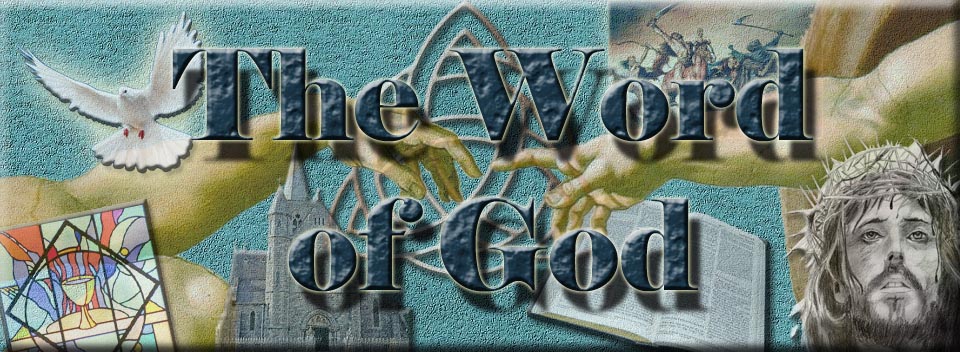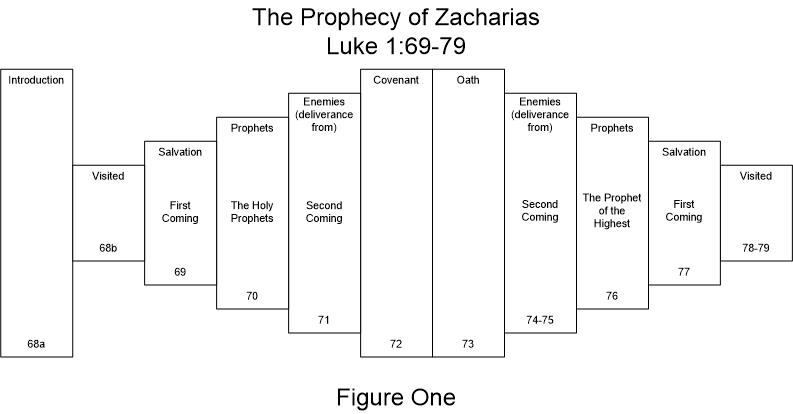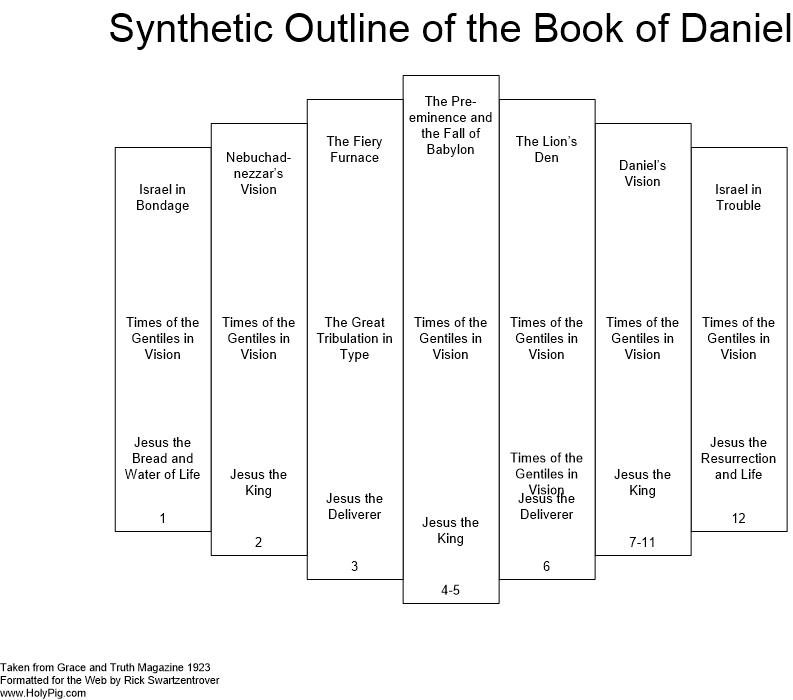
The Eighteen Principles of Divine Revelation
Principle No. 10 The Synthetic Principle
By Clifton L. Fowler
Taken from Grace and Truth Magazine 1924
| The Word of God does not contain imperfection. Fault does not exist in the Bible. This fact does not only apply to the doctrinal content of the Old Book, but to the Literary structure as well. God has given to men a flawless message, — flawless as to its spiritual revelation and equally as flawless as to its literary formation. Why should such a thought be difficult of acceptance? Why should we regard it as a strange thing that literary and structural perfection should exist in the Bible? Would not any other thought than this be insulting to God? Is God the Creator of the imperfect? Since the Bible came from God, does not that very fact carry with it the emphatic implication that the Bible is perfect? The physical creation bears the mark of God's hand both in its wonder and its perfection. Science does not hesitate to aver the unfailing perfection of every blade of grass, every insect, every dewdrop. The visible earth contains a testimony to God in the symmetry, harmony, beauty and perfection of the physical structure of every created thing. It is only to be expected that in agreement with this fact we should find an ever present perfection in the literary structure of the Bible. The principle of divine revelation under which this literary structure of God's Word becomes manifest, we call the Synthetic Principle. The definition of the Synthetic Principle is: The Synthetic Principle is that Principle of Divine Revelation under which God so fully superintends the literary structure of the Bible that from Genesis to Revelation it is constructed in introversions or alternations or combinations thereof. This principle is proved by a direct statement in Ps. 19:7:
But some one may raise the objection, "This passage is speaking only of the spiritual teachings of God's Word. It means the message of the Rible is perfect. It does not means that its literary structure is perfect." To this we must reply, "There is nothing in the passage to warrant limiting the force of the words in any direction. It simply says 'The law of the Lord is perfect'!" The context shows that the word "law" is used in the 19th Psalm to answer to such expressions as "thy testimonies," "thy statutes," etc. Hence the thought of the passage is "The Word of the Lord is perfect." Since there is no restriction placed on this astounding statement, we can arrive at but one conclusion, — God is here teaching that His Word is perfect in every particular. When it teaches of doctrine, it is perfect. When it makes historical allusions, those allusions are all perfect. If the Word touches upon things scientific, then that scientific reference is unfailingly accurate. If the theme dwelt on is in the realm infinite, the declaration of the Word on that theme may be received with an unclouded faith, for the Word is perfect. And when we recall that God's Word is a written thing, a literary production, we are brought face to face with the fact that one of the most important spheres into which God's Word enters is the literary sphere. From the literary standpoint the Bible is perfect. Since God has not limited the application of the wonderful words of Ps. 19:7 we do not limit them. "The law of the Lord is perfect," — perfect as to doctrine in every realm where it touches, and perfect as to literary form. This remarkable principle has not always been recognized by students of the Word. The present day recognition of the principle is not universal. Only those earnest seekers for God's truth whose hearts are most hungry, whose minds are most open, and whose souls are most willing, have caught a vision of the charm and blessing to be found in the study of the Synthetic Principle. In the year 1778, Bishop Robert Lowth gave to the world his book on Isaiah. In this book he presents a discussion on the Hebrew poetry which shows that God was opening the eyes of this great man to the presence of the Synthetic Principle in the Word. However, Lowth died without realizing the full import of the line of investigation which he was following. In 1810 Bishop John Jebb, following along the trail which Lowth had started to blaze, for years diligently pushed his studies of the "parallelisms" and "alternations" and "introversions" in the literary structure of the Bible. But Jebb did not make great advance over the remarkable pioneer work which had been accomplished by Lowth. The soul-stirring struggle of Bishop Jebb as he searched for the underlying laws of the literary structure of the Bible is revealed to us in his private correspondence with Alexander Knox. In these letters, which cover a period of thirty years, and which are now more than one hundred years old, these two great men exchanged the results of their deepest meditations as they groped in God's Book for the elusive key to the Bible's literary structure. Their letters shed a flood of light on the problem they were investigating and paved the way to the much more crystallized work of the Rev. Thomas Boys who published his "Key to the Book of Psalms" in the year 1825. In this book Boys departs from the circumscribed view held by Lowth and shows that God has built every Psalm on a clearly defined literary plan. The work of Boys opened the door to the astounding fact that there was, underlying all Scripture, a literary outline which was just as definitely inspired as the text itself. This great discovery in Bible study of course met with frenzied opposition. In these later years, however, some of the world's greatest Bible students have recognized, approved and employed the Synthetic Principle. There are just two major forms which appear in the structures of the Bible passages. They are, as has been stated in the definition, alternations and introversions. These forms sometimes appear in most complex combinations and modifications but in this brief study we will only present some of the more simple examples. ALTERNATION When a group of subjects is presented in a specific order and is followed by the same or a related group of subjects, PRESENTED IN THE SAME ORDER, this literary formation is called an alternation. Let us go to one of Bishop Jebb's letters to Alexander Knox for an illustration of the alternation. Jebb is speaking to Knox of his special study of literary form in the Bible,—1
Jebb's very method of arranging the passage in his letter to Knox shows up the alternation. Notice that A and A are set forth as answering to one another because in both of these members the Saviour speaks of the fact that the Pharisees are "blind":
Whereas in the remaining two members (B and B also answering to one another) the Saviour speaks of "the temple" and "Gold":
The Synthetic Principle has in these recent years been quite completely brought to light. But how refreshing it IS to look backward upon the Holy Spirit's dealings with the Bible students of a century ago and behold with what gentleness He led those students to catch their first faltering glimpses of the alternation, which we now know is one of the basic forms of Biblical literary structure. These facts are indeed a striking illustration of the Progressive Revelation Principle, a principle which will yet be discussed in this series of studies. Another simple example of the alternation is referred to by a much later writer, the Rev. Samuel G. Green.2 One of the passages mentioned in this connection by this writer is Jno. 3:20-21. It is an alternation of two groups with three members in each group. We present it, arranged to exhibit the alternation, —
These examples of the alternation are easily detected. As these literary beauties unfold before the child of God, the soul finds itself entering into a new appreciation and a new delight in the perfection of the Book of Books. So much for the Alternation. INTROVERSION When a group of subjects is presented in a specific order, and is followed by the same or a related group of subjects PRESENTED IN THE OPPOSITE ORDER, this literary formation is called an Introversion. We select from Rev. Thomas Boys' book on the Psalms a simple example of the introversion.3
The remarkable beauty of this formation becomes most clear to the mind if A and A are read together, then B and B are brought together. Also observing the capitalized words will make more clear to the student the beauty, symmetry and perfection of the Psalm thus synthesized. Perhaps the most easily detected Introversion in the Bible is the Prophecy of Zacharias in Luke 1:67-795 This passage may be exhibited thus:
Turn to the passage and read it with this outline before you. As the marvel of the literary structure of Scripture dawns upon you, the soul will worship God with deeper devotion, and a fuller confidence. We present this same passage in diagram on this page (See Figure 1). With the aid of these diagramatic presentations of synthetic outlines, the mind quickly grasps the wonderful formation which the Holy Spirit has placed within the passage and equally as quickly receives the truth which is being imparted. Wondrous Book indeed is the Book which God hath given.
THE SYNTHETIC PRINCIPLE ILLUSTRATED BY THE BOOK OF DANIEL The value and usefulness of the Synthetic Principle becomes evident when it is applied to the Books of the Bible. The literary form of each book has been produced by the Holy Spirit. The writers of the Bible were men of widely different training and origin. They were men of vastly differing outlooks upon life. Some were men so destitute of schooling that we of today would say they were "untrained men." Some were men of the highest training of their day. Within every book in the Bible is an absolutely perfect literary structure, based upon alternations and introversions. Did all these men go to the same school? No, that was impossible, for their lives were scattered over sixteen centuries. Besides, as we have said, some were without any schooling of any sort. Whence, then this astonishing ability to produce literary structures every one of which is a gem? Whence this amazing uniformity of literary formation in the productions of men whose minds were by nature so widely divergent? There is but one answer to these queries. God Himself inspired the literary form as well as the doctrinal content of every book and chapter and line in the Bible. The Old Testament book bearing the name of the Prophet Daniel is a striking example of the activity of the Synthetic Principle. The book is an introversion of seven members (See figure 2). The opening member is covered by chapter one, which sets forth Israel in Bondage. It is a time of severest trouble, during which a faithful remnant miraculously grow and get fat on a starvation diet. This chapter presents the nation of Israel in three divisions.
Thus this chapter becomes a clear type of Israel in the Great Tribulation, for in that future dispensat'on of Judgment Israel shall be in three divisions perfectly corresponding to the groups as set forth in this type. Turri to the 1 2th chapter of Daniel and there see the other extreme of the introversion. Chapter 12 answers to chapter 1. Again Israel is seen in a time of terrible trouble and again the Holy Spirit sets forth the nation as being divided into three divisions. The three divisions as set forth in Daniel!2 arc:
The startling correspondence between chapter 1 and chapter 12 is a revelation of the presence of the Synthetic Principle. It is the hand of God which has placed this wonderful method of literary formation in the Bible. And let it be observed, this literary form does not obscure the message, but is so employed by the Spirit that the message is made more plain. The chapters we have so briefly considered are a demonstration of this, for as we have been investigating the literary form we have been brought into direct contact with clear prophetic truth concerning Israel in the coming period of terrible tribulation. The entire balance of the Book of Daniel is a further illustration of this principle. Nebuchadnezzar's vision in chapter 2 answers to Daniel's visions in chapters 7 to 11. The two chapters of mighty faith-filled heroism answer to one another, — The Fiery Furnace incident of chapter 3, and the Lions' Den incident of chapter 6. The remarkable thing about these various sections is that each one, considered separately and distinctly, points to the dispensation of Israel's trouble when the Anti-Christ shall be manifested in all his blasphemous rage and fury upon the earth. The Fiery Furnace and Lions' Den are type prophecies showing that God shall protect His people and bring them through the coming tribulation more than conquerors. The central section of this beautiful introversion is the Babylon section. It is a type prophecy that the evil influence of Babylon shall predominate in the coming tribulation, but that the consummation of that future period of horrible trouble shall be the final fall of Babylon. This mould, into which the Spirit of God has cast the book of Daniel, is of such beauty as to charm the heart of the student of Biblical literature, prove the accuracy and activity of the principle which we are studying, and bring new delight and joy to the heart of him who is a simple believer in the absolute reliability of the Bible. THE SYNTHETIC PRINCIPLE ILLUSTRATED BY THE BOOK OF ROMANS Every book in God's library of 66 books contains just such literary structure, but we can give in this short study only one more example. We will use Paul's Epistle to the Romans, The Book of Romans is built upon a most beautiful synthetic outline. Reduced to its last simplification the outline of Romans would appear thus:
Referring to Figure 3 the reader can at once perceive that the "standing" and "state" sections have been expanded so as to exhibit to the eye the two five-fold subsidiary synthethic outlines contained in this great book given to God's people through Paul. This beautiful synthesis shows that "God's Righteousness" is the theme of the Roman letter. With Bible open to Romans, let the reader follow the outline through, observing the irresistible force of Paul's argument as he proves that man has no hope Whatever in his own righteousness, but that all the bliss of eternity is guaranteed in the righteousness of God which is offered to a sin-cursed race by grace through faith. The message of the first large section of the Roman Epistle is that God's own righteousness may actually be the possession of any man who accepts Jesus Christ as his personal Saviour. This righteousness of God is a gift, not on the basis of deeds, and is the standing in heaven of every believer. Hence this section of Romans is designated the "standing" section. The pivot verse of the Book is Rom. 12:i. Paul's appeal is logical and clear. He says:
Thus the main dividing point of this letter, regarded by many as the greatest specimen of logical exposition in the world, is plainly indicated so that the ordinary student can easily and quickly catch a glimpse of the drift of the whole Epistle. The "state" section is a series of exhortations to believers to complete yieldedness and consecration, using the "standing" which God has given as the great incentive to such abandonment unto Him. The Synthetic Principle opens to the diligent and prayerful student of God's Word a vista of blessing, happy discovery, and spiritual growth which cannot be guessed or dreamed by the finite mind. Are there any \\ho are ready to enter in and claim the blessing? Copyright, 1924, Clifton L. Fowler. |
||
|
||
|
1) Thirty Year's' Correspondence between Bishop Jebb and Alexander' Knox, Vol. II, pages 54-56. 2) Hand Book to the Grammar of the Greek Testament by Rev, Samuel G. Green, page 355. 3) A Key to the Psalms by Rev. Thomas Boys, page 91. 4) The arrangement of this Psalm is taken from the Rev. Boys, The capitals are the editor's, introduced to aid the eye in. catching- the correspondences which the Holy Spirit has placed in this Psalm, 5) See Companion Bible, Vol. V. page 1434, Every student of the Bible should have a copy of the Companion Bible for constant reference. It is one of the greatest reference works ever published. It fully recognizes the Synthetic Principle. |
-
Site Navigation
 Home
Home What's New
What's New Bible
Bible Photos
Photos Hiking
Hiking E-Books
E-Books Genealogy
Genealogy Profile
Free Plug-ins You May Need
Profile
Free Plug-ins You May Need
 Get Java
Get Java.png) Get Flash
Get Flash Get 7-Zip
Get 7-Zip Get Acrobat Reader
Get Acrobat Reader Get TheWORD
Get TheWORD




